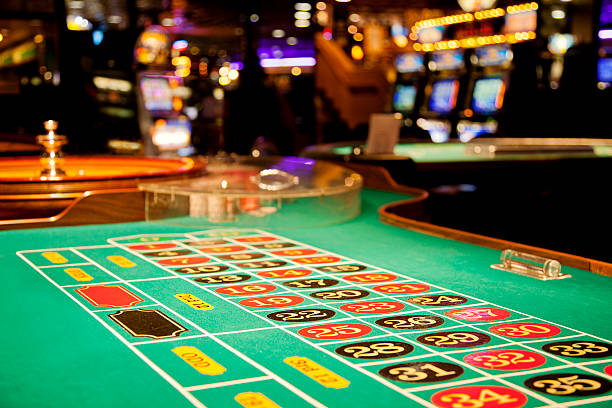
Within a vibrant and thrilling world of casinos, where luck and strategy intertwine, color and aesthetic play a key role in drawing in gamblers. As soon as visitors step inside a casino or access a gaming platform, they are immersed in a sightly feast that grabs their attention and entices them to explore more. Vivid colors, captivating graphics, and creative layouts are meticulously crafted to create an atmosphere of excitement and anticipation, ultimately improving the gaming experience.
As gamblers move through the ever-changing landscape of casino games, they encounter a range of designs that not only serve aesthetic purposes but also influence emotions and decision-making. Colors like red and yellow symbolize wealth and fortune, while soothing navy and emeralds can create a more tranquil environment. Understanding how these elements work together allows casinos to create an welcoming and stimulating atmosphere that encourages players to engage with the games, invest more time at the tables, and boost their general enjoyment.
The Psychology of Hue in Gaming Establishments
Hue plays a crucial role in the creation of gambling games, shaping player emotions and responses. Lively and bold colors, such as crimson and yellow, are often used to stimulate excitement and draw notice. These hues create a sense of pressure and vitality, encouraging gamblers to involve themselves more eagerly with the experience. By thoughtfully selecting tints, developers aim to evoke emotions of satisfaction and anticipation, which can enhance the overall game experience.
Various colors also have psychological associations that can impact how participants perceive their chances of success. For case, green is commonly associated with good fortune and abundance, making it a popular choice in games like roulette and poker games. This link can cause players to feel more optimistic and assured in their play, ultimately encouraging them to bet more. Understanding these links allows game creators to craft environments that enhance player enjoyment and retention.
Furthermore, the interface of gaming interfaces often employs color gradients and opposing shades to guide players’ responses. For instance, winning outcomes may be accentuated with bright, opposing colors, creating a visual reward. This method strengthens positive outcomes and supports repeated engagement. By leveraging the science of color, gambling establishments can design activities that not only draw gamblers but also maintain them engaged and committed in their play experience. https://bandkpower.com/
Creative Elements that Attract Players
The visual appeal of casino games is primarily influenced by the implementation of vibrant colors. Bright and contrasting colors are deliberately chosen to create an inviting atmosphere that captures attention. For instance, reds and golds often signify good fortune and wealth, which is why they are common in the palettes of gaming machines and table surfaces. These colors not only draw players in, but they also stir emotions related to excitement and anticipation, enhancing the total gaming experience.
In addition to color, the aesthetic and organization of casino games play a crucial role in player attraction. Games are designed to be intuitive, ensuring that players can quickly understand the rules and gameplay. User-friendly interfaces, along with engaging graphics and animations, help maintain gamer interest and encourage longer play sessions. The physical elements, such as the texture of the controls and the sounds of the games, also add to a holistic sensory experience that keeps players engaged.
Finally, conceptual elements in gaming design can greatly influence player choice. Many gambling games are inspired by media, fairy tales, or exploration motifs, incorporating symbols and characters that resonate with players. These themes create a sense of engagement and connection, making each game feel distinct. When players feel a connection to the concept, they are more likely to choose that game over others, leading to higher participation and enthusiasm within the gambling environment.
Case Studies: Successful Casino Game Designs
One key example of effective casino game design is the acclaimed slot machine series themed around blockbuster movies. Games such as those based on the The Wizard of Oz and Game of thrones utilize bright colors and top-notch graphics to engage players in familiar narratives. The application of moving visuals and engaging sound effects captures the attention of players, building an emotional connection to the theme. This tactic not just encourages longer play but also improves the overall gaming experience, resulting in increased player retention.
Another successful case is the application of the psychology of color in table games like 21 and the wheel. Casinos often create these games with rich reds and greens, colors traditionally associated with luck and wealth. For instance, the green felt on a blackjack table provides a calming effect, while the crimson accents in the wheel invite excitement. This intentional use of color helps to foster an inviting atmosphere that motivates players to engage, addressing their psychological impulses and boosting their enjoyment.
Finally, social casino games that incorporate community features and bright, lively designs have achieved remarkable success in engaging players. Games like Zynga’s Poker and Slotomania leverage striking colors and playful animations to establish an inviting online environment. The addition of leaderboards, community sharing options, and in-game rewards promotes competition and community, drawing players in for longer sessions. Such designs not just make the games visually appealing but also emphasize social interaction, a crucial factor in player retention and engagement within digital casino environments.